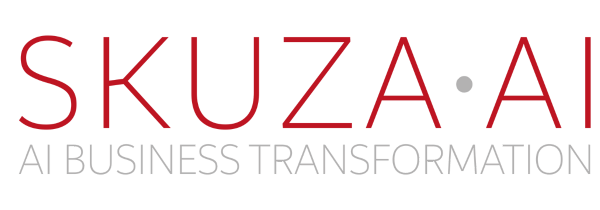While artificial intelligence may be perceived with skepticism by some business leaders, often due to inflated expectations and a lack of clear understanding regarding its practical applications, the technology holds immense potential for transforming businesses across various industries. When implemented strategically, AI can address core challenges faced by C-level executives, delivering measurable improvements in efficiency, customer experience, cost optimization, and revenue growth. This report aims to dispel reservations by providing concrete use cases of AI, supported by real-world examples and quantifiable results, demonstrating its tangible impact on business outcomes.
Understanding the Current Landscape: Key Business Challenges for C-Level Executives
Chief executives today navigate a complex and rapidly evolving business environment, facing a multitude of interconnected challenges that demand strategic and innovative solutions. A primary concern across industries is the relentless pressure to enhance efficiency in operations, streamline workflows, and optimize resource allocation. Simultaneously, executives are tasked with continuously improving customer experience, fostering loyalty, and adapting to evolving customer expectations in an increasingly digital world.
Optimizing costs remains a critical objective, requiring executives to identify areas for expenditure reduction while maintaining or improving quality and service delivery. Furthermore, the imperative to drive revenue growth necessitates exploring new markets, enhancing product offerings, and optimizing sales strategies.
Beyond these core challenges, leaders must also effectively manage talent, ensuring they attract, develop, and retain skilled employees in a competitive landscape. The ability to navigate uncertainty and disruptions, whether economic, geopolitical, or technological, is paramount for organizational resilience. This includes adapting to changing market conditions driven by technological advancements and evolving consumer behaviors.
The current global landscape is further characterized by geopolitical instability, which can significantly impact supply chains and market access. Executives must also stay ahead of regulatory shifts and ensure compliance in an increasingly complex legal environment. Building a resilient supply chain that can withstand disruptions and adapt to changing demands is another critical priority. Furthermore, the ever-present threat of cybersecurity threats requires constant vigilance and investment in robust security measures. Finally, sustainability has moved from a peripheral concern to a core business imperative, with increasing pressure from stakeholders to adopt environmentally and socially responsible practices. These challenges are not isolated incidents but rather interconnected facets of a complex business ecosystem, requiring comprehensive and forward-thinking strategies.
The Strategic Application of AI: Use Cases and Business Impact by Function
Artificial intelligence offers a powerful toolkit for addressing these multifaceted challenges. By strategically applying AI across various business functions, organizations can achieve tangible results and drive significant business impact.
A. Enhancing Customer Engagement and Personalization in Marketing and Sales
AI is revolutionizing how businesses interact with their customers, enabling enhanced engagement and highly personalized experiences. AI-powered personalization analyzes vast datasets of customer behavior, purchase history, and preferences to create tailored experiences. For example, Amazon leverages AI for product recommendations, reportedly driving 35% of its annual sales. Netflix’s recommendation system, powered by AI, analyzes viewing habits to suggest personalized content, with approximately 75% of what people watch originating from these recommendations.
AI also excels at content generation and marketing automation, enabling businesses to create targeted and engaging campaigns. Tools like Albert AI have helped companies like Crabtree & Evelyn see a 30% increase in return on ad spend. AI-powered chatbots and virtual assistants are transforming customer service by providing 4/7 support, answering queries, and even guiding purchases. Klarna’s AI customer service assistant resolves two-thirds of customer service chats, the equivalent of 700 full-time employees, and anticipates a $40 million profit boost.
AI also plays a crucial role in predictive analytics for marketing and sales forecasting, enabling businesses to anticipate customer behavior and optimize strategies. Starbucks, for instance, uses AI for personalized offers and recommendations, leading to increased customer loyalty and higher average order values. These applications demonstrate AI’s ability to create more personalized and efficient customer interactions, driving revenue growth and enhancing customer satisfaction.
B. Driving Operational Efficiency and Optimization in Supply Chain and Operations
AI offers significant opportunities for optimizing supply chain and operations, leading to increased efficiency and reduced costs. AI for demand forecasting and inventory management analyzes historical data, market trends, and external factors to predict demand accurately and optimize stock levels. Walmart utilizes AI for demand forecasting, which has led to more efficient stock planning and reduced instances of overstock or stockouts. Unilever’s ice cream supply chain uses AI to analyze weather data and improve forecast accuracy by 0% in Sweden, optimizing production and reducing waste.
AI also optimizes route planning and logistics, considering factors like traffic, weather, and delivery schedules to improve efficiency and reduce fuel consumption. UPS uses AI-powered predictive analytics in its ORION system to optimize delivery routes, saving 0 million gallons of fuel annually. Predictive maintenance, another key application of AI in operations, analyzes equipment data to predict potential failures, allowing for proactive maintenance and reducing unplanned downtime. GE Aviation employs AI to monitor jet engine performance and predict potential failures, lowering maintenance costs by 30%. Siemens uses AI for predictive maintenance, reducing unplanned downtime and lowering maintenance costs.
AI-powered robots and automation in warehouses and production lines are streamlining tasks, improving accuracy, and enhancing safety. Amazon utilizes cobots in its fulfillment centers to expedite order fulfillment and streamline logistics. DHL uses AI-powered robots for sorting parcels, increasing sorting capacity by 40%. These examples illustrate AI’s significant impact on operational efficiency, leading to substantial cost savings and improved service levels.
C. Improving Financial Performance and Risk Management in Finance
The finance industry is rapidly adopting AI to enhance financial performance and strengthen risk management. AI for fraud detection and prevention analyzes transaction data and identifies anomalies to prevent financial crime. JP Morgan Chase implemented AI-driven solutions for fraud detection, resulting in a 50% reduction in false positives and a 30% increase in the detection rate of actual fraudulent activities. Algorithmic trading and investment management leverage AI to analyze market trends and execute trades with speed and precision. AI for risk assessment and credit scoring analyzes various data points to determine creditworthiness and assess potential risks more accurately. ZestFinance’s AI-powered underwriting platform helped auto lenders cut losses by 3% annually.
AI also automates various processes in finance and accounting, such as data entry, invoice management, and regulatory compliance. Bank of America’s AI chatbot, Erica, has handled over .5 billion interactions, improving customer satisfaction and reducing wait times. These applications demonstrate AI’s ability to enhance financial security, improve decision-making, and streamline operations.
D. Transforming Talent Acquisition and Management in Human Resources
AI is significantly transforming human resources functions, from talent acquisition to employee management. AI for recruitment and candidate sourcing analyzes resumes, matches candidates to job requirements, and automates various aspects of the hiring process. Unilever implemented AI in its recruitment process, saving over 50,000 hours in candidate interview time annually and increasing talent diversity by 6%. AI also streamlines employee onboarding and offboarding processes, automating tasks such as document management and system access revocation.
AI plays a role in performance management and employee engagement analysis by identifying skill gaps, analyzing employee sentiment, and providing insights for targeted interventions. General Electric (GE) utilizes AI to analyze employee performance data and provide personalized feedback, leading to a 0% increase in employee productivity. AI also facilitates personalized learning and development by recommending tailored training programs based on individual skills and career aspirations. Accenture’s AI-powered learning platform has led to a 30% increase in employee skill levels. These applications demonstrate AI’s potential to optimize HR processes, improve employee experience, and enhance workforce capabilities.
V. Cross-Industry AI Use Cases: Broadening Applicability
Beyond specific business functions, AI exhibits broad applicability across various industries. For instance, AI is used in healthcare for medical imaging and diagnosis, personalized treatment plans, and virtual health assistants. IBM Watson for Oncology assists doctors in identifying cancerous growth early by analyzing medical literature and patient data. In the automotive industry, AI powers autonomous driving systems and optimizes manufacturing processes. Tesla’s Autopilot uses AI to process data from its fleet to reduce accident rates. The retail sector utilizes AI for personalized recommendations, inventory management, and dynamic pricing. Amazon’s recommendation engine drives a significant portion of its revenue. In logistics and transportation, AI optimizes routes, predicts maintenance needs, and powers autonomous vehicles. UPS uses AI to optimize delivery routes, resulting in significant fuel savings. These examples highlight the versatile nature of AI and its potential to drive value across diverse business sectors.
VI. Potential Risks and Challenges Associated with AI Adoption in Businesses
While AI offers numerous benefits, businesses must also be aware of the potential risks and challenges associated with its adoption. One significant concern is the implementation costs, which can range from a few thousand dollars for basic AI solutions to millions for complex, custom-built systems. These costs include infrastructure, software, data acquisition and management, and the hiring or training of skilled personnel.
Data privacy concerns are also paramount, as AI systems often handle vast amounts of sensitive data. Ensuring compliance with data protection regulations like GDPR and CCPA is crucial. Furthermore, there is a significant need for skilled personnel and talent to develop, implement, and maintain AI systems. Addressing the ethical considerations of AI in business practices, including fairness, transparency, and accountability, is also crucial for building trust and ensuring responsible use of the technology. Establishing clear governance frameworks and adhering to evolving regulations are essential for mitigating these risks.
VII. Conclusion
Artificial intelligence presents a significant opportunity for C-level executives to address critical business challenges and drive tangible impact across their organizations. From enhancing customer engagement and optimizing operations to improving financial performance and transforming talent management, AI offers a range of practical applications with quantifiable results. While potential risks and challenges such as implementation costs, data privacy concerns, and the need for skilled personnel must be carefully considered and mitigated through robust governance frameworks and ethical guidelines, the strategic application of AI is no longer a futuristic concept but a present-day imperative for businesses seeking to enhance efficiency, foster innovation, and achieve sustainable growth in an increasingly competitive landscape.




